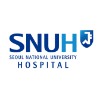
Pre-clinical Cardiac Dysfunction Among Asymptomatic Hypertensive Patients
HypertensionHigh Blood Pressure3 moreThis project will evaluate the clinical and cost effectiveness of a novel, multidisciplinary approach to identify and treat pre-clinical cardiac dysfunction (PCCD) in asymptomatic hypertensive patients identified in a single center urban emergency department. Premature onset of pressure-related cardiac complications of hypertension (especially heart failure) has important implications for long-term survival, quality of life and healthcare costs. This project will target patients who have already developed pressure-related cardiac structural abnormalities yet remain symptom free. These individuals are at tremendous risk for progression to clinically overt heart failure and its associated consequences. We hypothesize that detection and treatment of patients with hypertension who have pre-clinical structural cardiac damage will enable forestallment of the disease process and offer the opportunity to reduce the burden of cardiac morbidity associated with hypertension. This project will implement a program to prospectively identify PCCD (using echocardiography) and provide treatment. At present, the optimal blood pressure goal for patients with PCCD is unknown so this study will randomize patients to 2 levels of blood pressure control: "normal", which is consistent with current national guidelines and "intensive", which will aim for a markedly lower blood pressure (< 120/80). Enrolled patients will receive active treatment and follow-up for 1 year. At the end of 1 year, we will evaluate: 1) the ability of this program to achieve blood pressure goals; 2) the cost effectiveness; and 3) the proportion in each blood pressure group who have evidence of disease regression on echocardiography.

Randomized Trial Comparing Partial Resection of Inferior Turbinate(PRIT) and Radiofrequency Ablation(RFA)...
Nasal ObstructionSeptal Deformity1 moreTurbinates are large structures in the nasal airway that help the nose to clean and humidify the air we breathe. Inferior turbinates can swell up and block the breathing passage, making it hard to breath. To address this, turbinate size must be reduced. This study looks at two common procedures for turbinate reduction: Radiofrequency Ablation (RFA) involves inserting a special needle into the inferior (lower) turbinate that releases thermal energy, which significantly reduces its size. This can be done under local anesthesia at the doctor's office. Partial Resection of Inferior Turbinate (PRIT) involves surgically removing a piece off the turbinate, which also reduces its size. While both procedures improve nasal obstruction, no study has directly compared which is more effective. Eighty patients being treated for septal deformity and turbinate hypertrophy will be randomly chosen for either PRIT or RFA treatment. They will fill out a simple, five question survey that measures how they view their nasal blockage 4 times in one year. We believe that since PRIT permanently removes a part of the turbinate, PRIT patients will report more improvement than RFA patients one year later. We believe that complications (measured by the doctor) will be the same for both treatments.

Efficacy, Safety, and Tolerability of Perhexiline in Subjects With Hypertrophic Cardiomyopathy and...
Hypertrophic CardiomyopathyA Study on the Efficacy, Safety, and Tolerability of Perhexiline maleate in Subjects with Hypertrophic Cardiomyopathy and Moderate-To-Severe Heart Failure

Comparison of Occlusive and Classical Hypertrophy Training in Terms of Thickness and Stiffness of...
Muscle TightnessHypertrophy1 moreOcclusive or ischemic training is a type of strength training which is becoming more and more popular every day. The safety, efficacy and detailed description about the use of occlusive training is well documented in the literature. However, the effects on hypertrophy and the stiffness of the muscle tissue are not studied. We aimed to measure these changes by ultrasound technology in a randomized controlled design.

Effect of Extraesophageal Reflux on Inferior Nasal Turbinates Hypertrophy
Inferior Nasal Turbinate HypertrophyExtraesophageal RefluxThe study examines the severity of extraesophageal reflux using oropharyngeal pH monitoring in patients with varying degrees of lower turbinates hypertrophy.

Temperature and Healing in Treatment of Gingival Enlargement
Gingival EnlargementAim: Gingival enlargement is a common clinical condition which requires surgical approaches to alleviating these enlargement areas. The aim of this study was to investigate epithelization, gingival temperature, inflammation and pain levels in post-operative healing process in 4 different gingivectomy techniques including Er:YAG laser, Nd:YAG laser, electrosurgery and conventional gingivectomy in treatment of chronic inflammatory gingival enlargements. Material and Method: A split-mouth designed study was conducted on 37 systemically healthy patients consisting of 19 females and 18 males, who had gingival enlargement areas on the left and right of maxillary and mandibular anterior regions. Gingival crevicular fluid (GCF) samples were collected, clinical periodontal parameters and gingival temperature levels were recorded at baseline and in the postoperative period. The gingival temperature was measured during surgical procedures. Gingival temperature and epithelization levels in 3rd, 7th, 10th and 15th days; GCF levels in 15th, 30th, and 90th days and pain levels in 2nd and 8th hours and between 1st-7th days of post-operative healing process were evaluated.

Placebo-controlled Trial With Nasonex for Nasal Obstruction Secondary to Adenoids Hypertrophy in...
Nasal ObstructionAdenoids Hypertrophy1 moreThis is a randomized, double-blind, placebo-controlled study to document the long-term effect of treatment with mometasone furoate nasal spray in moderate to severe adenoids hypertrophy as reflected by the need for removal of the adenoids within one year of the treatment regimen. Subjects will be assigned treated with either mometasone furoate nasal spray or placebo for 3 months. Subjects will be followed for an addition 12 months. Serious AEs will be followed starting first dose-till 30 days after study treatment period completion. This study was terminated - Please see "P04367 - Lebanon"

Intron A for the Treatment of Hypertrophic Scar
BurnHypertrophic ScarThis study assesses the intervention with antifibrotic agents, specifically interferon (IFN) to reduce the magnitude and duration of hypertrophic scar. Burn patients with hypertrophic scar are randomly assigned to either an intervention IFN group or a placebo control group by subcutaneous injection three times a week. Patients are assessed using cutometer, mexameter, standardized photography, urinalysis, blood work, tissue biopsies and the Vancouver Burn Scar Assessment (VBSA) which rates selected HTS based on color, vascularity, height, pliability, itchiness and pain sensitivity. Once on treatment patients are assessed monthly for the six month treatment period.

Tulobuterol Patch in Pediatric Patients Undergoing Tonsillectomy
Tonsillar HypertrophyTonsillectomy is a common pediatric procedure for the treatment of sleep-disordered breathing and chronic tonsillitis. Up to half of children having this procedure experience a perioperative respiratory adverse event. We tried to determine whether tulobuterol patch (transdermal bronchodilator) premedication decreases the risk of perioperative respiratory adverse events in children undergoing anesthesia for tonsillectomy.

Use of Autologous Adipose-Derived Stem/Stromal Cells (AD-cSVF) in Symptomatic Benign Prostate Hypertrophy...
BPHNocturia3 moreBenign prostate hypertrophy (BPH) and inflammation are common non-cancerous enlargement of the prostate, which result in urinary interference and incomplete drainage of the bladder. Compression of the urethra is common cause of such resistance of full draining, and may over time result in progressive hypertrophy, instability, urgency, nocturia and weakness of the bladder musculature. Prostatic growth frequently begins in the 30s, and it is estimated that 50% of all males have benign enlargement leading to 75% by age 80. BPH and low grade inflammation is one of the ten most prominent and costly disorders in males over 50. Urinary tract symptoms are divided into issues of storage, voiding, and post-void symptoms can be associated with bladder outlet obstruction (BOO). This study utilizes isolation of adipose-derived stem/stromal cellular stromal vascular fraction (AD-cSVF) deployed as an IV suspension in sterile Normal Saline (500cc). Due to the anti-inflammatory and immunomodulatory effects common to AD-cSVF are tested in relief of the inflammatory elements and the concurrent hypertrophy in BPH. Early pilot use has suggested a positive effect on these issues, and have relieved much of the incomplete voiding, pain, nocturia, delay in starting/stopping urination, and increased urgency and frequency. Lipoharvesting of Adipose-Derived tissue stromal vascular fraction (AD-tSVF) is now a common closed access to subdermal adipose stromal/stem cell population consisting of both stem and stromal cells, each of which are felt to contribute a wide variety of effects and potentials. Closed, sterile isolation of the AD-cSVF is possible with advent of closed systems to enzymatically release these cells from the actual matrix (scaffolding) within the adipose tissue complex (ATC). This group of largely un-designated cell population is isolated and concentrated via a standard gradient layer separation by centrifugation. This cellular isolate is then suspended in an IV of 500 cc Normal Saline and reintroduced to the patient. This study is examining the clinical safety and efficacy of this approach, as well as tracking the duration of effects and establish a therapeutic interval.
